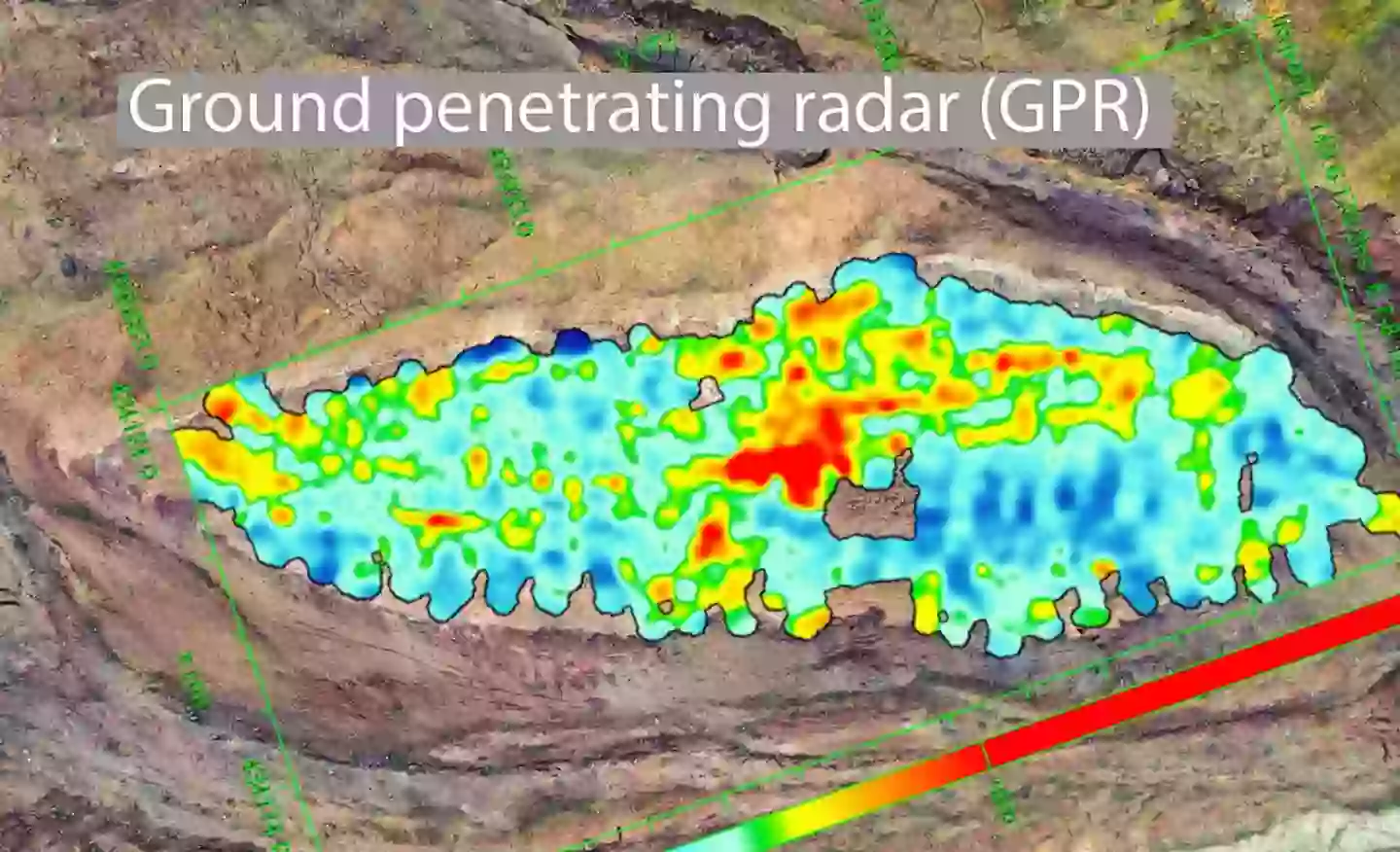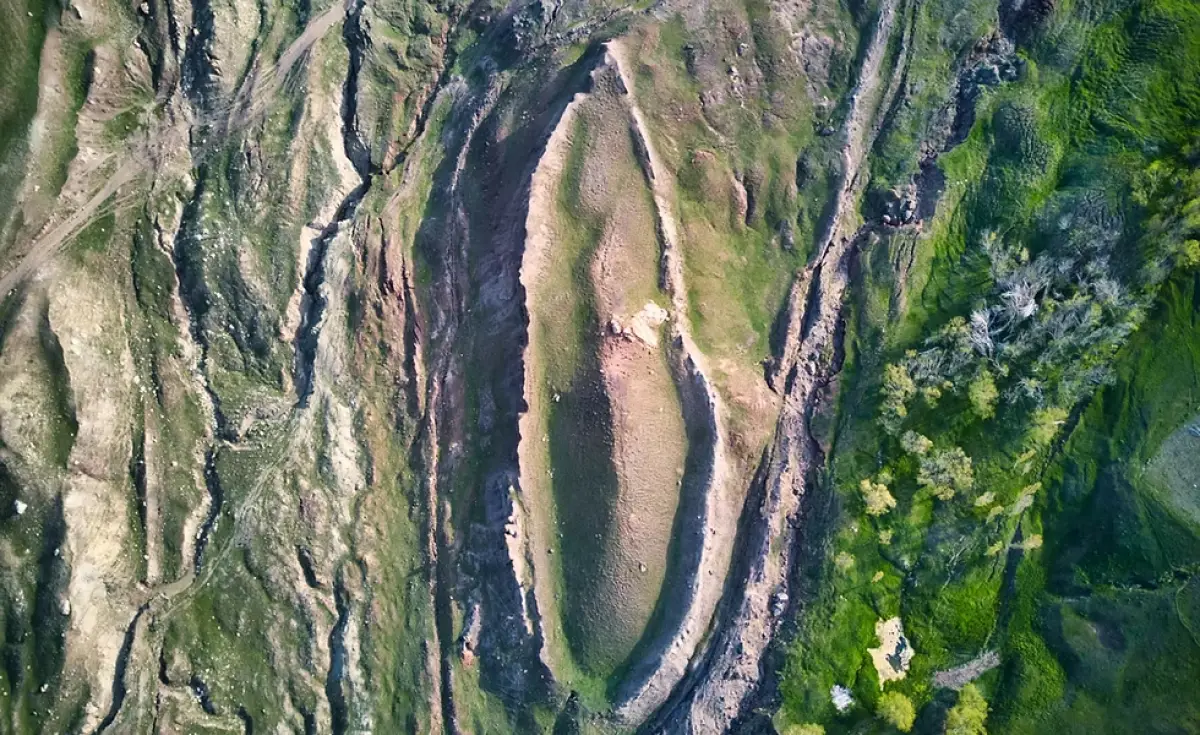In what could be described as a discovery of biblical proportions, scientists have announced what they believe to be the exact location of Noah’s Ark. Using advanced radar technology, a team of American researchers has uncovered what they say may be the remains of the Ark, buried deep within the earth in eastern Turkey. This revelation comes after years of speculation and investigations into the legendary vessel that, according to the Bible, saved Noah and his family—and a pair of every animal species on Earth—during a great flood.
The story of Noah’s Ark, as told in the Book of Genesis, has captivated believers and skeptics alike for centuries. The idea of a massive boat, big enough to house two of every living species, surviving a catastrophic flood that wiped out the rest of the world, has sparked imaginations and debates worldwide. According to the biblical account, Noah’s Ark was described as being 300 cubits long, which is roughly equivalent to one and a half football fields in length, leading to questions about how such a feat of engineering was possible.
Now, researchers believe they’ve found the answer, or at least the location, after conducting a series of radar scans that have provided “unexpected” details about the potential location of Noah’s Ark. The site, situated about 18 miles south of Mount Ararat in Turkey, has long been considered a potential location for the ark, given that the Bible mentions the vessel coming to rest on the “mountains of Ararat” after the floodwaters receded. The discovery has the potential to reshape our understanding of both ancient history and the biblical narrative.
The Discovery: Radar Scans and the Boat-Shaped Formation
The breakthrough came during a series of ground-penetrating radar scans conducted by the team working under the banner of Noah’s Ark Scans. This loose organization, according to independent researcher Andrew Jones, is a group of people passionate about pursuing scientific work on the ark’s location. Their scanning efforts have focused on a site known as the Durupinar site, which, remarkably, bears a striking resemblance to the shape of a boat.
At 538 feet in length, the Durupinar site aligns with the biblical dimensions of Noah’s Ark. The boat-shaped mound, located in the eastern Turkish mountains, had long been a subject of interest for both scholars and amateur explorers, but it was only after these radar scans that the team began to uncover detailed structural features within the formation.

Andrew Jones is convinced the scans prove it’s the ark (CBN News/YouTube)
According to Jones, the scans revealed significant findings. The radar showed a 13-foot “tunnel” running through the center of the structure, along with subterranean layers and what appeared to be central and side corridors. These features seemed to support the biblical description in Genesis 6:16, which mentioned that Noah’s Ark was built with “lower, second, and third decks.” Jones pointed out that these findings made it highly likely that the structure, if not the Ark itself, was at least man-made.
Uncovering Clues: Organic Matter and Soil Science
The radar scans did not just reveal structural elements; they also provided valuable insight into the composition of the site. The team noticed a distinct difference in the grass growing inside the boat-shaped formation compared to the surrounding areas. Upon testing, they found that the soil within the formation had lower pH levels than the soil outside it, which they said was consistent with the decomposition of organic material, like rotting wood. This finding, according to Jones, could point to the presence of wooden remnants from the Ark itself.
William Crabtree, another member of Noah’s Ark Scans and a soil scientist, elaborated on the importance of these findings. “If this was a wooden boat and the wood had rotted over time, we would expect to see elevated levels of potassium, changes in pH, and higher organic content—and that’s exactly what we’re finding,” Crabtree explained. The results seem to support the theory that the boat-shaped mound could indeed be the remnants of a wooden vessel that had decomposed over time.

The scans of the site (NoahsArkScans.com)
Despite these promising findings, Jones remains cautious about claiming definitive proof that the site is Noah’s Ark. He explained that the scans revealed a “chemical imprint” of potential wooden remains, which means the material may no longer be present in its original form. Instead, what the team is observing could be the remnants of the wood’s decay, preserved in the soil as a chemical trace.
The Biblical Connection: Is This the Ark?
While the evidence gathered by the team is intriguing, it is far from conclusive. Jones and his colleagues are careful to emphasize that their findings represent only a “clue” rather than a final answer. However, he does believe that the discovery matches the biblical description of the Ark, specifically its size and structure. “This is not what you’d expect to see if the site were simply a solid block of rock or the result of random mudflow debris,” Jones said. “Instead, it fits the specifications given in the Bible.”
The idea that this could be the resting place of Noah’s Ark raises profound questions about the intersection of history, archaeology, and faith. If the site is confirmed as the Ark, it would represent one of the most significant archaeological discoveries of the 21st century, with the potential to validate one of the most famous stories in religious history. But skeptics remain, as they often do with such sensational claims. Many are waiting for further evidence to either substantiate or refute the findings.
Next Steps: Drilling and Further Research
To determine whether the Durupinar site is truly the resting place of Noah’s Ark, Jones and his team plan to conduct further investigations, including a core drilling survey. Drilling into the site would allow them to collect soil samples and potentially uncover additional evidence that could provide more definitive answers about the structure beneath the surface.
“We are eager to give us a much clearer picture of whether this is truly something man-made,” Jones said. The team hopes that by extracting samples and conducting more in-depth analysis, they will be able to confirm whether the structure is man-made, if it’s an ancient vessel, or if it is merely a geological formation with an uncanny resemblance to the Ark.
Despite the uncertainties, the excitement surrounding the discovery has only grown. The potential to uncover Noah’s Ark or at least confirm its location would have immense religious, cultural, and historical significance. The implications of such a discovery would likely reshape our understanding of ancient history and the biblical flood narrative, while also sparking further exploration of similar sites around the world.
The Larger Context: Why This Discovery Matters
The significance of this potential discovery goes beyond the question of whether or not this is truly Noah’s Ark. It speaks to humanity’s enduring fascination with the story of the great flood and the Ark’s symbolic role in the survival of life on Earth. For centuries, scholars, theologians, and archaeologists have searched for evidence to support the biblical account, and while many expeditions have come up empty-handed, this discovery offers new hope that a long-sought answer may finally be within reach.
Moreover, the potential discovery of the Ark could have profound implications for how we view ancient civilizations, their ability to build massive structures, and their understanding of the world around them. The search for Noah’s Ark has often been seen as a quest for understanding humanity’s earliest beginnings, as well as the intersections of myth, history, and religion. Whether or not this particular site is the Ark, the process of investigation itself adds valuable insight into how we approach ancient mysteries and how science and faith can sometimes work together to uncover new truths.
Conclusion: A Discovery That Could Change History
As the research continues and more tests are performed on the site, the question remains: Could this truly be the location of Noah’s Ark? While the findings so far are compelling, they are far from conclusive. However, the discovery of a boat-shaped formation with the right dimensions, accompanied by soil samples that suggest the presence of decaying organic material, has opened up a tantalizing possibility.
Whether or not the Durupinar site proves to be Noah’s Ark, this discovery underscores the importance of combining modern science with ancient questions. It also highlights the enduring power of the Ark story in human history—one that continues to inspire wonder, curiosity, and exploration. The answers may still be elusive, but for now, the journey to uncover the truth about Noah’s Ark continues to captivate the world.

